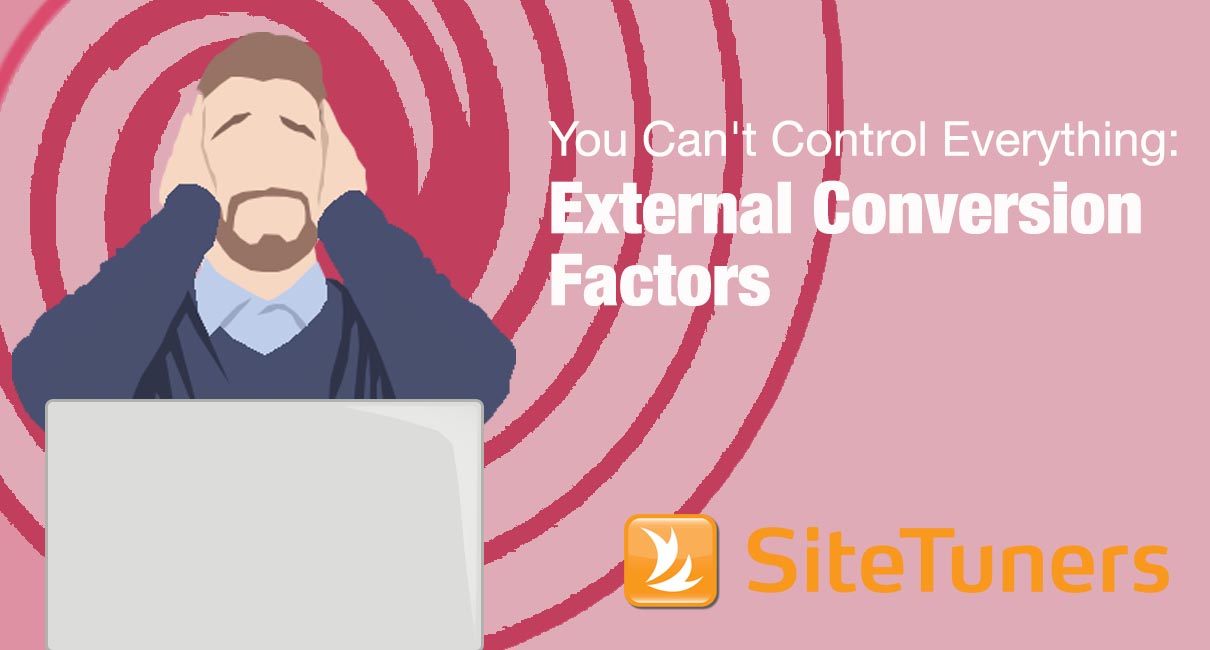
I’ve written a lot about the techniques marketers can employ – and avoid – to optimize their landing pages for higher conversions. But one important fact remains: before people even get to your website, they will be inclined or disinclined to act by factors that have nothing to do with your site directly. Numerous external factors affect conversion rates, despite your best efforts to influence your visitors’ decision-making process once they arrive on your site. In short, you can’t control everything.
Brand Strength
Visitors to your website are more likely to act if they are familiar with your company or products and trust your brand promise. Many companies spend enormous sums of money to have their brand penetrate the public’s awareness long before they ever need or want the product. If they are successful, the brand serves as a permanent shortcut and aids in decision making. Companies without this status are simply not in the game, and will not be considered by many people despite their objective parity or even advantages over established rivals.
Degree of Commoditization
If your industry sells nearly identical generic products as your competitor does, then the main factor in visitors’ minds will be price. There may be many competitors who offer identical products, and it pays for the visitor to shop around. So the likelihood of a particular visitor converting is lower. If you offer a very specialized or unique product or service, your website visitors will be much more likely to act simply because there may not be many choices, or because the effort required to find viable alternatives may be too great.
Seasonality
Some products or services are in constant demand because they are either consumable (you will use them up) or perishable (they have a limited effective shelf life or a specific expiration date). So people will reliably replenish their supply or renew the appropriate subscription. Other products are highly seasonal or are only needed for a single event or purpose. For example, the cut flower business has a steady flow of year-round occasions (dates and anniversaries), but is largely driven by the ordering frenzy that precedes Valentine’s Day and Mother’s Day. During such peak demand times, conversion rates will be higher because the product or service becomes a “must have.” For many seasonal businesses, the limited supply of available product can also drive up its value and desirability (e.g., scarce hotel rooms in high-demand locations, or airline seats on popular routes).
Physicality and Uniformity
The lament is often heard among e-tailers: “Why are we only converting 2 percent of our site visitors to buyers? We get much higher conversion rates in our retail locations. We must be doing a lousy job to lose 98 percent of potential customers.”
Of course, this is an apples-to-oranges comparison. The visitor to a physical store typically has already decided to invest more time and energy to the visit than a web visitor. Many of the visitors to a website who don’t purchase anything would never visit a physical store at all since they just don’t care enough to make the effort. The physical experience in a real store can never be duplicated online and involves many experiential and sensory details. Before a consumer decides to buy something in a physical store, there are a number of time-consuming tasks that must be completed first – drive to the store, park, walk inside, determine the layout of the store, identify the location of the item of interest, get the attention of a sales clerk, compare alternatives, and so forth.
This is a completely different experience than sitting in front of a computer and surfing the Internet. We stare at a tiny screen (compared to our normal field of vision), and decipher information that is organized typically not around our needs, but along the organizational and usability concepts of others. We rarely get to interact with the products beyond clicking on their small thumbnail image to get a larger zoomed view.
Intention and Commitment
Not everyone who visits your site has the same intention and commitment to act. Demographics, psychographics, personality type, role, time of day, day of week, physical environment, the presence or absence of distractions, and the visitor’s stage in the buying/decision cycle all affect commitment level. Someone who is surrounded by coworkers and researching a gift idea on their lunch break at work will behave very differently than someone who is alone at night in their home and is looking for the lowest price vendor for a specific product. People are often looking for an intangible package that represents the best value proposition. Of course, price is often an important consideration, but other factors such as the warranty, in-stock availability, shipping speed and methods, positive reviews, available financing and payment terms, and accepted payment methods all enter into this equation.
People arrive at your website with all of these factors already influencing them to various degrees. And all of this happens before they even see your landing page. So don’t forget that your website does not exist in a vacuum. Your online visitors, like any other traveler, are already bringing a lot of baggage with them.
This article originally appeared in Tim’s ClickZ column August 29, 2011
Take your conversions to the next level.Learn how our experts at SiteTuners can help kickstart your conversion rate optimization process or get better results from your CRO efforts. Give us 30 minutes, and we’ll show you a roadmap to your digital growth! |


